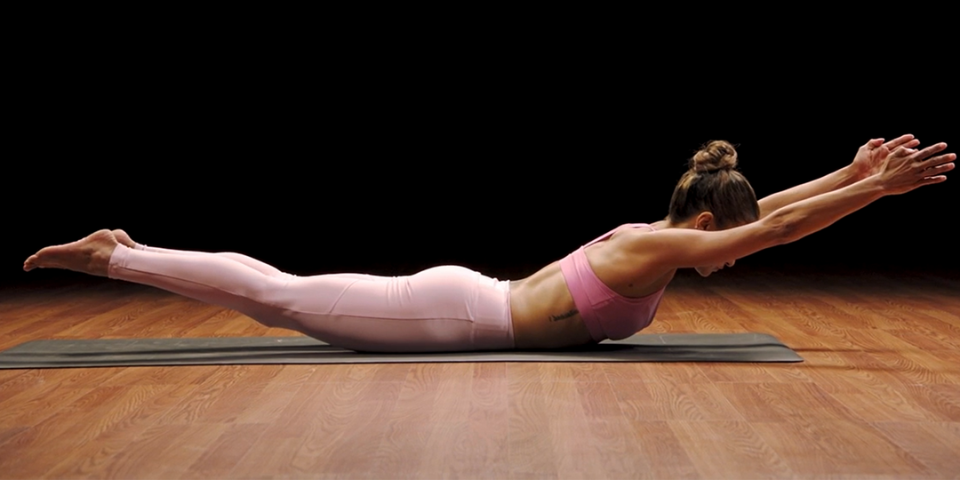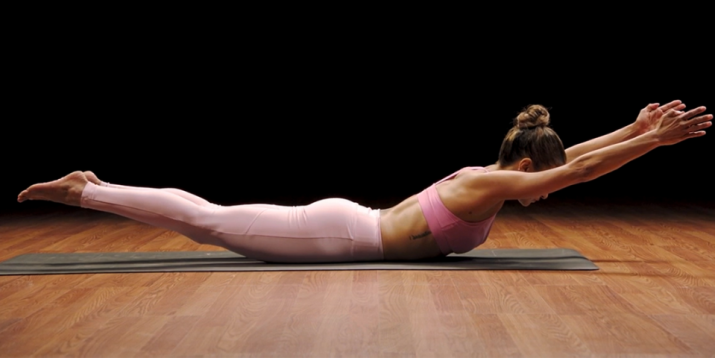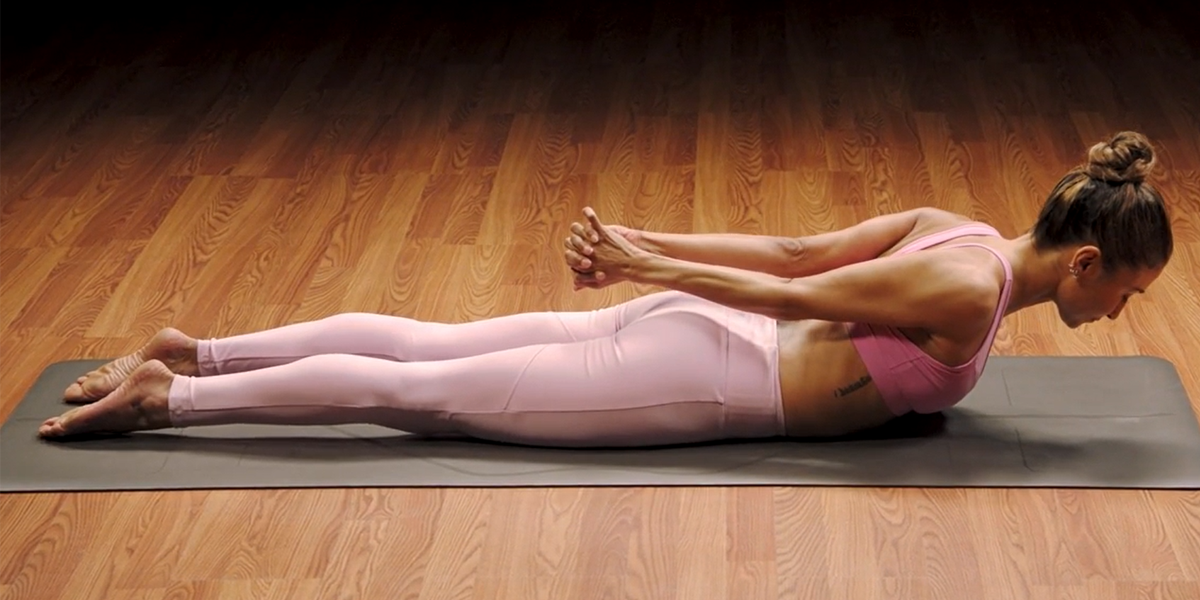How to Do Locust Pose in Yoga (Salabhasana)


Locust pose, or salabhasana, is a belly-down, or prone, yoga posture that stretches your chest, shoulders, and spine. It’s also a backbend that’s suitable for beginners.
“Locust pose improves strength and flexibility, and it is thought to reduce the effects of physical stress because it reverses slouching,” says ACE-certified personal trainer Jennifer Fuller, RYT 500.
There is so much happening in this relatively simple pose, which strengthens the entire back side of the body. Whether you’re learning the basic yoga poses or you’ve been practicing with Yoga52 for some time, energize your body and counter fatigue with locust pose.
Locust Pose: Step-by-Step Instructions
- Lie on your belly in a prone position with your arms extended overhead. Squeeze your legs together.
- Place your chin at the center of your mat, and look straight down at the floor to create length through the cervical spine. Relax your shoulders down your back. Rotate your palms down to open your chest.
- Take a deep breath in, then exhale and lift your head, shoulders, arms, and legs away from the floor. Hover your limbs a few inches off the mat.
- Arch your back, and engage your shoulders toward your spine. Straighten your elbows by squeezing the muscles on the back of your arms (your triceps).
- Engage your quadriceps to straighten your legs. Keep your ankles and feet touching if possible.
- Hold the pose for 60 to 90 seconds, then release.
- Rest in child’s pose.
Benefits of Locust Pose
- Locust pose is an all-over body-strengthening posture that Fuller believes should be in every yoga class because it creates greater spinal extension. This helps prepare the body for deeper backbends.
- Locust strengthens the muscles along the spine, which include:
- Erector spinae
- Quadratus lumborum in the lower back
- Trapezius in the upper back
- Gluteus maximus (your booty)
- Hamstrings
- Besides building strength along the back side of your body, locust is a great stretch if you work a desk job. When we sit for too long, our hips get locked in a flexed position. Locust pose stretches the hips to elongate the muscles on the front of your body. (That’s a little secret: Yoga backbends open the front of the body!)
Modifications and Contraindications
If you have a shoulder or back injury or are new to backbends, Fuller gives the following steps to modify:
- If your shoulders feel any discomfort, place your arms at your side, palms face down. Keep your arms by your sides, then only lift your legs.
- Those with back pain: Try lifting only one leg at a time — leave your arms at your sides with your palms face down.
- Try a bound locust by leaving your legs on the floor to protect your lower back from experiencing discomfort and clasping your hands behind your back.
- Place a rolled-up blanket underneath your thighs before lifting for added support.
- Spread your legs hip-width apart if you feel pressure in your lower back.
- If you want to make this pose easier, try keeping your arms by your side.
Looking for a quick release of the pressures of your day? Add locust pose to your yoga routine.






